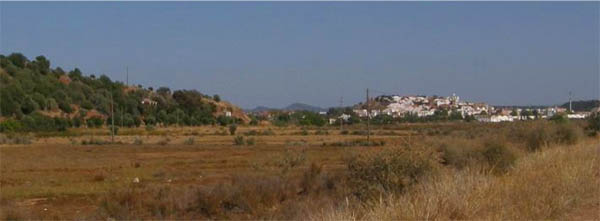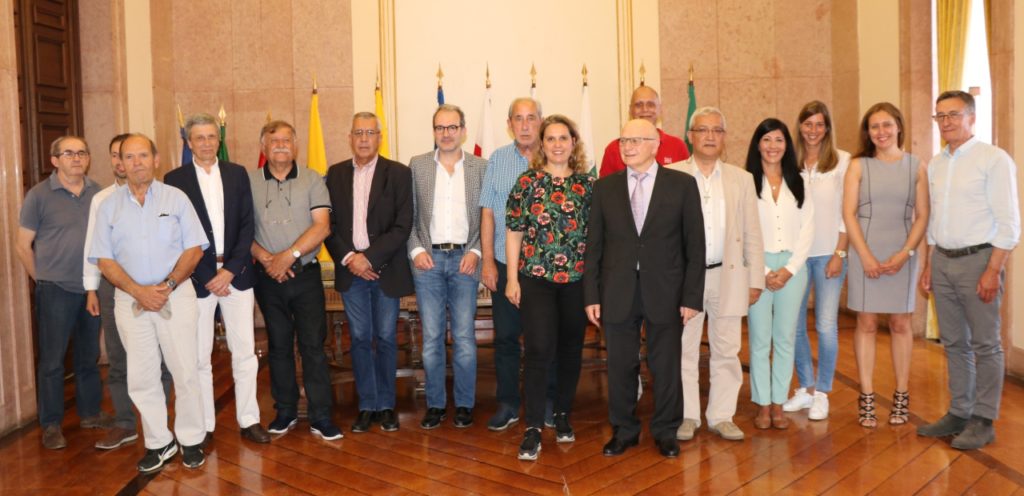An 18-hole golf course, a 5-star hotel with 700 beds and a lawn area for sports, supported by infrastructures for sports internships, are in the final planning stages in the area called Feitoria Fenícia, at the gates of city of Silves.
The Chamber of Silves announces, in a press release, that «the implementation of this project represents a global investment of 50 million euros, with the creation of more than a hundred direct jobs».
The contract for the elaboration of the Detailed Plan of this tourism development project was signed, on May 27th, by the Mayor of Silves and by the representative of the plan's promoter.
The project of the enterprise called Feitoria Fenícia – since it covers land where the archaeological site of Rocha Branca is located, destroyed in the 90s – foresees the creation of infrastructures for the realization of sports internships, for «teams installed in the hotel and in existing buildings that will be recovered and adapted to the new use».
It also includes a pedestrian path along the Arade River and a natural space for birdwatching and environmental education, which will include a set of tanks that correspond to the “Tapada do Moinho do Valentim” and the Moinho do Valentim, which “will be the object of intervention of rehabilitation and adaptation to an environmental education center», stresses the Municipality of Silves.
The vice-president of the Silves Chamber was also present at the signing of the contract, as well as the technical team involved in drawing up the plan.
The opening of the elaboration procedure of the Detailed Plan of the Fenícia Feitoria, with the respective Terms of Reference and the draft of the Contract for Planning, had already been the target of approval through deliberation of the municipal executive, in a meeting held on March 11th.
In parallel with this mandatory phase of the elaboration of the Detailed Plan, the Strategic Environmental Assessment will also take place, which will include moments of public participation.
In 2014, the golf course project had already been subjected to an Environmental Impact Assessment, at which time it aroused criticism, particularly from Quercus. The environmental association then underlined that the Feitoria Fenícia golf course in Silves will cause «further destruction of agricultural soils» and will affect «34 habitats in the full Natura 2000 network in the municipality».
The environmentalists recalled, in particular, that the project area (61,90 hectares) includes almost entirely (55,82 hectares) the Site of Community Importance “Arade/Odelouca” of the Natura 2000 Network, and is also classified as a National Agricultural Reserve (RAN), «which means that these soils are suitable for agricultural activity, where there are traces of recent plantations».
This project, which only included the golf course, received on 15 December 2014 opinion «Conditioning Favorable», that is, it was approved, but with the imposition of several conditions.
The conditions included, in particular, the requirement of "protection measures against extraordinary floods" or a "technical solution/landscape project for the conservation of the slope where the archaeological remains of Cerro da Rocha Branca are found".
The name «Feitoria Fenícia» is based on the fact that, in Cerro da Rocha Branca, an area integrated in this property, it was located, between the 2500th and XNUMXnd centuries BC, that is, around XNUMX years ago, a probable settlement Phoenician-Punic commercial, perhaps the most remote origin of the current city of Silves, which would have moved a few hundred meters further upstream from the Arade River and rise on another hill more to the northeast.
Cerro da Rocha Branca, which appears in Silves' archaeological map, has a very troubled history. It is that, about 25 years ago, when this then important Phoenician village – where «Cyclopean» structures were discovered and Greek ceramics dated from the beginning of the XNUMXth century BC. Ç - was being subjected to excavations coordinated by archaeologist Mário Varela Gomes, the then owners of the land ordered heavy machinery to destroy the archeological structures, allegedly to plant orange trees on that hill.
The case ended up in court, with the owners being sentenced to pay a sum of money – an almost unprecedented sanction at the time – as compensation for the destruction of the archaeological remains. The truth is that the investigators never returned to Cerro da Rocha Branca and the process of classifying the archaeological site was suspended because the work on the machines had even completely destroyed what was left of the possible Phoenician trading post...




















Comments